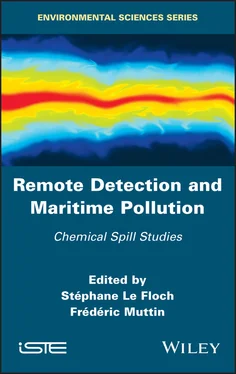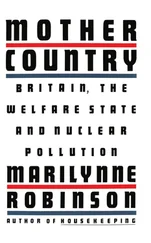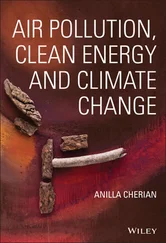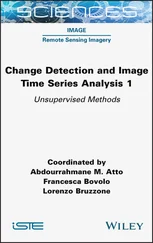Remote Detection and Maritime Pollution
Здесь есть возможность читать онлайн «Remote Detection and Maritime Pollution» — ознакомительный отрывок электронной книги совершенно бесплатно, а после прочтения отрывка купить полную версию. В некоторых случаях можно слушать аудио, скачать через торрент в формате fb2 и присутствует краткое содержание. Жанр: unrecognised, на английском языке. Описание произведения, (предисловие) а так же отзывы посетителей доступны на портале библиотеки ЛибКат.
- Название:Remote Detection and Maritime Pollution
- Автор:
- Жанр:
- Год:неизвестен
- ISBN:нет данных
- Рейтинг книги:5 / 5. Голосов: 1
-
Избранное:Добавить в избранное
- Отзывы:
-
Ваша оценка:
- 100
- 1
- 2
- 3
- 4
- 5
Remote Detection and Maritime Pollution: краткое содержание, описание и аннотация
Предлагаем к чтению аннотацию, описание, краткое содержание или предисловие (зависит от того, что написал сам автор книги «Remote Detection and Maritime Pollution»). Если вы не нашли необходимую информацию о книге — напишите в комментариях, мы постараемся отыскать её.
Remote Detection and Maritime Pollution — читать онлайн ознакомительный отрывок
Ниже представлен текст книги, разбитый по страницам. Система сохранения места последней прочитанной страницы, позволяет с удобством читать онлайн бесплатно книгу «Remote Detection and Maritime Pollution», без необходимости каждый раз заново искать на чём Вы остановились. Поставьте закладку, и сможете в любой момент перейти на страницу, на которой закончили чтение.
Интервал:
Закладка:
HNS releases were performed from the salvage, rescue and oil spill response vessel Ailette of the French Navy under the direction of CEPPOL (Centre of Practical Expertise in Pollution Response) and CEDRE. Each chemical product was contained in a one cubic-meter tank, in HDPE (High Density PolyEthylene) for non-aggressive HNS (rapeseed oil, FAME and methanol) and in metal for reactive or corrosive HNS (xylene, heptane and toluene). Each tank was inserted in a metallic structure equipped with two 220 L floaters to ensure the floatability of the system and a lifting strap to manipulate the tanks with the onboard crane (Figure 1.2). The release of the HNS was performed from a dinghy by pulling a rope that activates the opening of the tank. Due to the difference in density between seawater and HNS, the chemicals spread at the sea surface.
In order to follow the drifts of the HNS slicks, two drifting buoys were implemented. Their GPS positions were transmitted by satellite every 15 minutes.

Figure 1.2. One cubic-meter tank. (a) HDPE. (b) Metal
Three aircraft imaged the HNS slicks:
– a Falcon 20 from AVdef company equipped with the experimental pod SETHI, including the ONERA sensors: two radars (SAR) at X and L bands, full polarization (HH, HV, VH, VV), one SWIR hyperspectral camera (HYSPEX), one CamV2 camera (visible range);
– a POLMAR aircraft from DGDDI equipped with IR sensor, UV sensor and SLAR radar at X-band;
– a Cessna C-303 chartered by DRDC equipped with an IR hyperspectral camera (TELOPS).
On board the Ailette , two optical cameras were installed by DRDC: a MWIR hyperspectral camera and a Bomem MR304 LWIR and MWIR spectroradiometer.
In order to characterize the behavior of HNS once released at sea (evaporation, dissolution, emulsification, etc.), sampling of the slicks, the water column and the atmosphere were planned.
1.3.2.2. Experimental releases
HNS releases were planned to be performed two at a time, i.e. two HNS were nearly simultaneously released and imaged by the aircraft. The most dangerous HNS were first released (heptane and toluene), then methanol and xylene for the second release and, finally, FAME and rapeseed oil for the third release.
Table 1.1. Environmental conditions
| Date | Time (UTC) | Wind speed (m/s) | Wind direction (from-deg) | Wave height (m) | Wave direction (from-deg) |
| May 18, 2015 | 17:00 | 8 | 255 | 0.5 | 240 |
| May22, 2015 | 13:00 | 7 | 315 | 2 | 270 |
| May 22, 2015 | 16:00 | 7 | 315 | 1.75 | 270 |
The methodology used to release HNS is ideally suited to good weather conditions and, in particular, for a sea state compatible with the lifting operations. The first release was performed as planned on May 18 thanks to good weather conditions. Then, a strong wind episode (May 19–21, force 8, 35–40 knots) forced us to replan the last two releases on May 22. Sea and weather conditions during the experimentation are described in Table 1.1.
The first release took place on May 18, from 16:40 to 17:30 UTC. The sea was calm. Heptane and toluene were released from two semi-submersible 1 m 3tanks at 16:30 and 16:35 UTC, respectively (Figure 1.3). Heptane and toluene were released at a fixed position (separated by about 100 m). No samplings were realized for this release due to the reactivity of these HNS. Two drifting buoys were deployed simultaneously with the releases.
The airborne sensors implemented for this release were:
– SETHI: radar (X + L quad-pol) and optical (SWIR) sensors;
– DGDDI: SLAR and IR/UV.
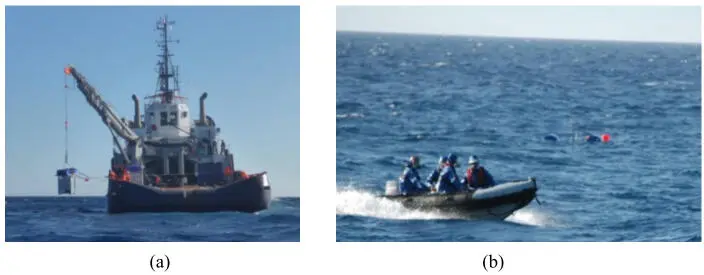
Figure 1.3. Releases of heptane and toluene
The positions of the two drifting buoys and the tanks at their opening and their recovery are shown in Figure 1.4. Buoys and tank data show a WSW direction drift. Toluene and heptane are highly volatile chemicals, and their persistence at sea surface is limited (prediction of 30 minutes persistence with the software CHEMAP). However, drifting buoys are of interest during such experiments to obtain in situ information, which enables us to readjust the prediction models.
The second release took place on May 22, from 13:25 to 13:55 UTC. There was a heavy swell, restricting any activity at sea; hence, products were discharged directly from the back of the vessel (French Navy) advancing towards the east at a speed of 1 knot: methanol was released from 12:35 to 12:45 UTC and xylene from 12:55 to 13:25 UTC. The sea state made it impossible to use the dinghy, to deploy the drifting buoys or to sample the slick and water column.
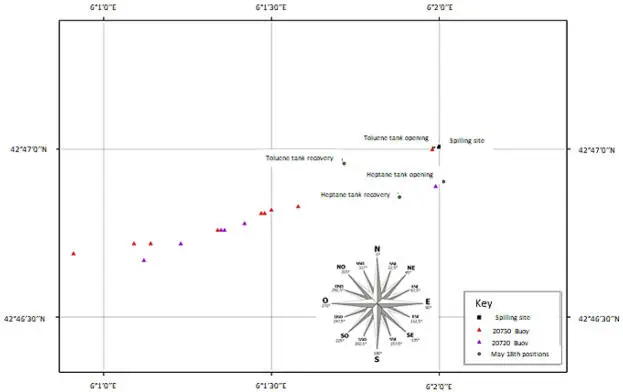
Figure 1.4. Map of sea surface of tank and drifting buoy positions during the first release. For a color version of the figure, see www.iste.co.uk/lefloch/remote.zip
The airborne sensors implemented for this release were:
– SETHI: radar (X + L quad-pol) and optical (SWIR) sensors;
– DGDDI: SLAR and IR/UV;
– DRDC: LWIR hyperspectral.
The third release took place on May 22, from 15:20 to 16:50 UTC. Because of the swell, products were also released directly from the back of the boat advancing towards the east at a speed of 1 knot: rapeseed oil was discharged from 15:00 to 15:30 UTC and FAME from 15:25 to 15:40 UTC (Figure 1.5). No samplings and no deployment of drifting buoys were possible due to the sea state.
The airborne sensors implemented for this release were:
– SETHI: radar (X + L quad-pol) and optical (SWIR) sensors;
– DGDDI: SLAR and IR/UV;
– DRDC: LWIR hyperspectral.
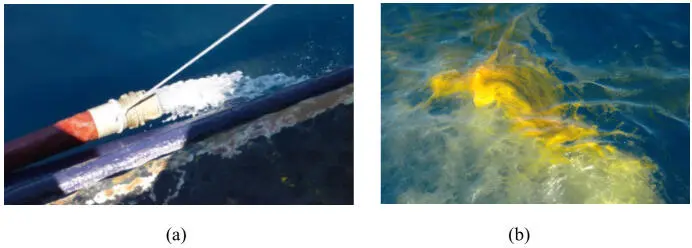
Figure 1.5. Releases from on board the Ailette (a) and rapeseed oil slick (b)
1.4. Conclusion
The POLLUPROOF project aims to set up a procedure for collecting evidence of illegal maritime pollution from noxious liquid substances using airborne sensors. To achieve this goal, an experimental approach was divided into two parts. First, optical sensors were calibrated in a mesoscale spill experiment. Then, optical and radar sensors were implemented in a realistic experiment at sea to image the slicks from noxious substances.
The optical and radar results obtained during these experiments are beyond the scope of this presentation and will be presented elsewhere. However, they are clearly promising and demonstrate how hyperspectral sensors are complementary to classic optical and radar sensors for the detection of chemicals at the sea surface.
The research presented in this chapter is part of the POLLUPROOF research program (ANR-13-ECOT-007) funded by the French National Research Agency (ANR). The authors are very grateful to everyone involved in the experiment at sea (ONERA, CEDRE, AVDEF, DGDDI and the French Navy).
Читать дальшеИнтервал:
Закладка:
Похожие книги на «Remote Detection and Maritime Pollution»
Представляем Вашему вниманию похожие книги на «Remote Detection and Maritime Pollution» списком для выбора. Мы отобрали схожую по названию и смыслу литературу в надежде предоставить читателям больше вариантов отыскать новые, интересные, ещё непрочитанные произведения.
Обсуждение, отзывы о книге «Remote Detection and Maritime Pollution» и просто собственные мнения читателей. Оставьте ваши комментарии, напишите, что Вы думаете о произведении, его смысле или главных героях. Укажите что конкретно понравилось, а что нет, и почему Вы так считаете.
